Wilderness Adventures Wilderness Education
Learn About ''Wilderness Ship'' or Wilderness Knowledge And How to Survive in Nature
01/12/11 08:48 Filed in: Feeling Safe and Living Well in the Wild .. Stefan's Introduction to Wild Living
Hi Everyone!
For a very long time my students, friends and many others, have bugged me about writing a blog. I honestly did not know what a blog was, when people around me first started talking about it, years ago.
I do understand that many people are very interested in reading about what I am up to. (The dogs and I)
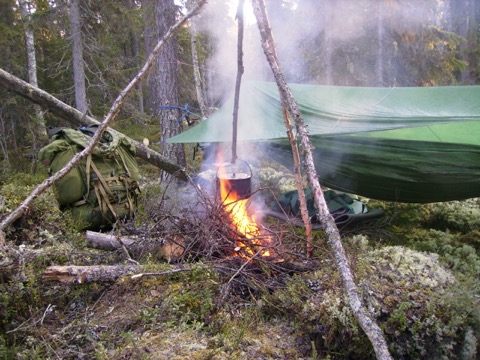
Well, I do spend a lot of time in the wilderness. I may not spend every night (sleeping) in the wild, but I am out there almost every day. If nothing else, the dogs need to burn off steam, me too. (I never put my dogs on leashes, by the way. I do not own any. I do not need them, never have. My dogs are always free, whether I am in a big city or in the wilderness, walking past a herd of reindeers. I have total control. I believe dogs have just as much right to enjoy the wilderness and it is one of my goals in life to raise awareness about this, and generally improve the lives of our domestic animals: http://dogfutures.com).
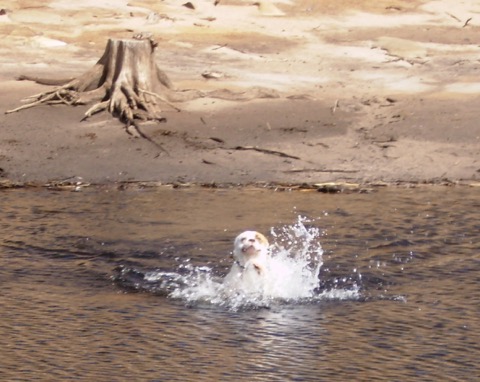
My opinion is, when it comes to animals, that if we cannot take care of them the way that we are supposed to, well, then do not keep any. We must always fullfil their needs. For example: give them the very best animal food that we can buy. My dogs can always eat as much as they want, I do not think they know what hungry is, I feed them all the time.
Right now:
SPORTING LIFE ENDURANCE 4800 - Royal Canin
PRO ENERGY 4800 / Adult / Professional Canine Products (Royal Canin)
HIGH-ENERGY SUPER PREMIUM DOGFOOD (Svenska Hundfoder AB)
This is good dog food and the “strongest” I can get a hold of at the moment. I also give them fat, tripe and offal.
I also give them this brand from Sweden: Klass Hundfoder and it also works well for their lifestyle.
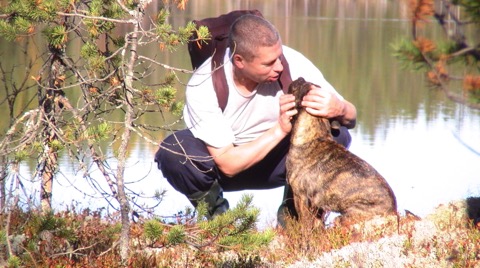
Now remember, my dogs run a lot, and I mean a lot. I walk, hike, ski. I run, ride my mountain bike, paddle my canoe (Ally Folding Canoe 18’ DR Green - Bergans of Norway). The dogs of course run on dry land.
Sometimes I will bring good food and coffee, find a nice spot, light a fire and just sit there. Reading, thinking, enjoying watching the dogs run around and play, etc. I can sometimes spend a whole day like that. Wonderful! If you have never done anything like that, try it. You will not regret it.
Sometimes, instead of reading a book, etc. I will make something. I will also bring a knife, axe and saw. (Always keep your cutting tools sharp. I always teach methods for sharpening tools in courses). It is therapeutic to sit in the wilderness and make things. It is fun and relaxing. Does not have to be anything complicated. I have made many different things over the years.
To give you just a few examples:
Making rope/cordage/thread out of natural fibres/materials, including from animal sinews and skins/hides.
Also, making things you can use in the wild - at home too - I work with a knife, axe, saw and embers to produce items that I need, like a spoon, ladle, container, cup, bowl, can, jar, shrink pots. Our forefathers even made canoes/boats using embers.
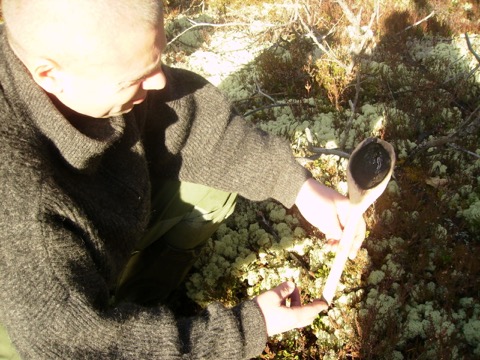
You can make many different things using birch bark too. For example: a mug to drink from, a container to store things in and/or boil water.
You can use hot rocks (and you can also boil water in a plastic bag, raincoat, etc. Using hot rocks). You can even make a canoe. I have never made a canoe from birch bark, but many other things. Like I mentioned above.
Pine bark? Yes, you can make containers, etc using pine bark too. I teach these in the courses we run as well. You can even mix pine bark in your food. Pine bark bread, for example.
Something else that is easy to make, is a stool and/or a cutting board. I usually dig up some spruce roots and tie to the cutting board, so that I can hang the cutting board from a hook. You can see in this photo here:
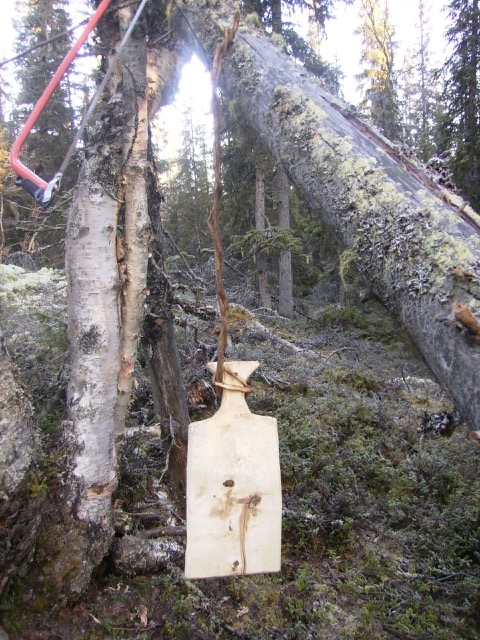
Hooks are easy to make from any kind of tree. All you need to do is find a tree with a branch, cut it off and then remove the bark with your knife. Very simple. Do not forget to split the tree in half, one side flat. Then it is easier to screw or nail to a wall.
Speaking of hooks, clothespins are also easy to make, and can be used for different things. Not just to use to hang your laundry, you can also use them to pin together a makeshift drinking bowl, for example.
Spending time like this, you can also develop and practice your other native/bushcraft skills. For example; lighting fires, both with and without matches. (I will be writing more about this later, and go into more detail about using a bow drill, tinder, kindling, fire steel, and other different kinds of fires). Especially in bad weather, when everything is soaked, knowing how to produce a fire is everything. Do not let rain or sleet stop you from going into the wilderness. Even a very wet day you can enjoy yourself and be very comfortable, if you just have the knowledge.
You can also build a very cosy and warm shelter from just natural materials. I can write more about that later and explain how I make shelters. Here’s one built during a course last month.
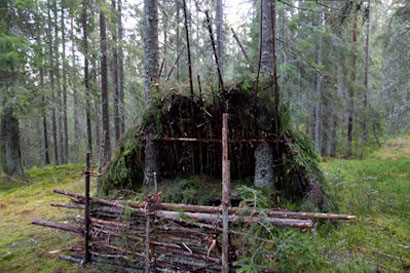
If you bring a tarp, well, that will save you time. You can very quickly erect a shelter/protection, light a fire and be dry, warm and comfortable. I can write more about this too, later and post you some pictures.
A tarp you can get at the local gas station, feed store, hardware store, etc. Or you can buy a Hilleberg, very good. I recommend their tarps, tents, etc. http://hilleberg.se/product-family/tarp
While we are on the subject of tarps. I like hammocks as well. There are several advantages with hammocks. I will be writing more about hammocks in a later blog, and how you can use a regular tarp to set one up. It is very easy and all you need is a tarp from the gas station and some rope.
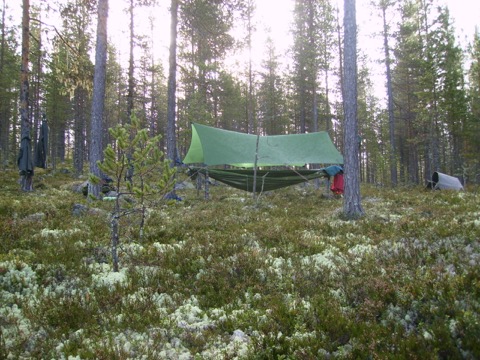
I will be writing and demonstrating how to make different kinds of knots too. Knots are very useful to know, not just in the wilderness. I will give some examples in future blogs, some good ones but it´s best to join a group of others making knots. My students say that they always enjoy this part of a wilderness skills program. Knots are fun.
Just like everything else that we do, when we get out there in nature.
I think sometimes that it is cosier to be in the wilderness in bad weather. Once I have built a shelter, got a nice fire going, some good food and coffee, maybe something good to go with the coffee. I am dry, warm and comfortable, the dogs too. I am sitting there listening to the rain and the wind, reading, whittling, etc. Very nice.
I have a car, a house with everything in it, a computer and a lot of other stuff, even a DVD player. I have stayed at very nice hotels all over the world, etc. Been picked up from airports in very nice vehicles and so on. But I am always the most comfortable/satisfied/happy, in the wilderness in a shelter built with natural materials, or a tarp.
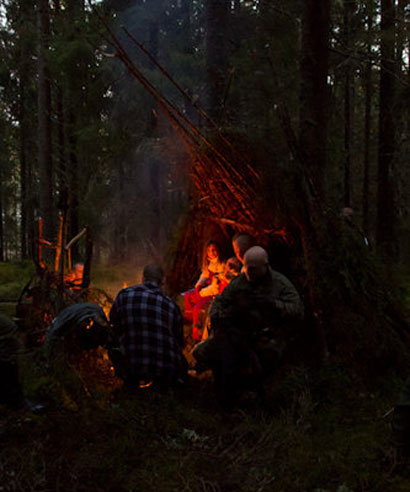
All we need is a full belly, cover and warmth. If we add a dog or two or three or four …it is even better. I do not mind a human or two either, as long as they have the correct mental attitude. Cannot stand people who complain and whine, have excuses for everything, and in general have crappy attitudes. These are quitters. A looser attitude does not last long in the wilderness.
You want to see what I am like when my heart rate rises? Well, tag along and complain, whine and bitch about things, and you will find out…
Talking about food and a full belly: I sometimes cook my food in an earth oven, stone age style. That is a very good way of cooking your food. You can put everything in the pit, and the taste is wonderful. Better than a restaurant.
There are many advantages with earth ovens, I will be writing more about earth ovens later, and how I build them, cook in them, etc.
I will also be writing about several other ways to cook your food, without pots and pans. The way our forefathers did it.
Another thing we can talk about later is smoking and drying food. A very ancient and reliable way of preserving food.
While we are on the subject, traps and snares are also something that I will be writing about. Some very effective ones.
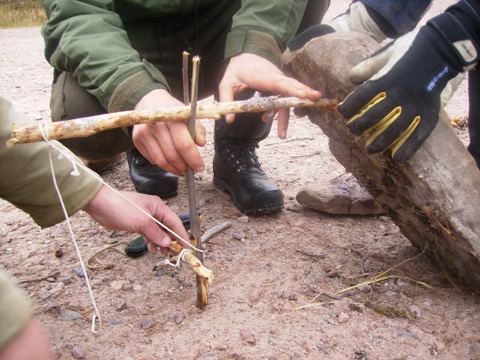
Slaughtering animals falls under that category too I guess. How do we take care of a dead animal, deer, hare, etc? How do we skin them and so on? How do we utilize the different parts of the animal? I talked earlier about making thread/cordage out of sinew. We can also make glue, because animal sinew contains natural glues. And yes, you guessed it, I will be writing about that too, sooner or later.
Wild plants for food and medicine? Yes, I teach my students about that too, goes without saying. That is a very big subject. Plants are also easier to catch than wild animals. Will get back to that subject sometime.
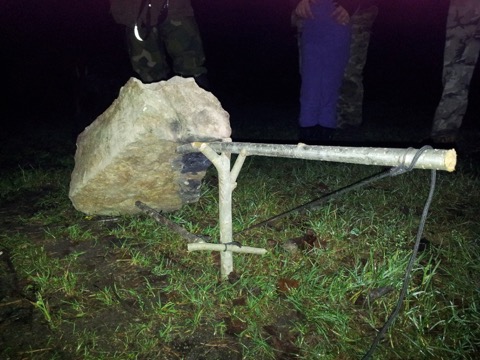
Probably the most important and also fun, is navigation. Most people today do not even know how a compass works, how to use one. Same thing when it comes to maps. A whole new world will open up if you learn how to navigate, use a compass, read maps, etc.
For example, do you know what declination is?
Do you know the difference between true north and magnetic north?
I not only teach my students how to navigate using a compass and map. I also teach them how to use/read signs in the wilderness, there are several. I will get in to that later.
I have walked for weeks in the wilderness without a compass and map. I was just a boy in the seventies, when I would take my dog and disappear into the wilderness for up to two weeks. (No compass or map) Backpack, tent, fishing equipment, etc. It was great, still is.
Can we use a regular wristwatch to find north, south, east and west?
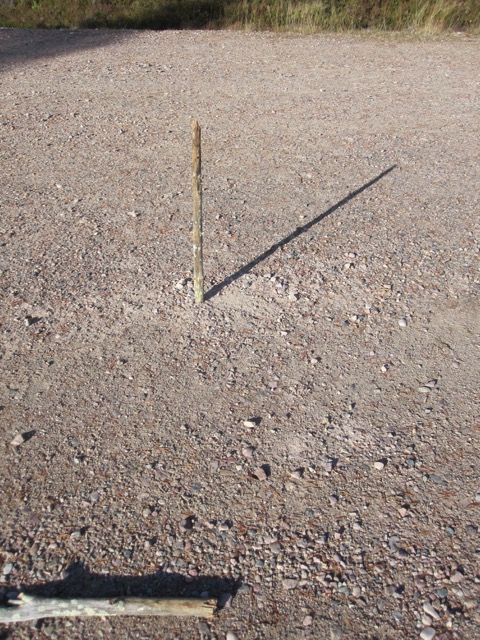
Can we use a stick and a couple of small rocks to find north, south, east and west? Is that possible?
If you do not have a watch, can you still find out the time? Maybe we can use the same stick and rocks? The compass?
Of course, I also teach my students about the stars, the moon and the sun. Very important when you are out there.
I am now starting to see two computers, time for bed soon. It’s getting late.
I do not know if there are any rules to follow when one writes a blog. This is my very first time and I am just rambling on here. Hopefully I am making some kind of sense anyway.
But before I throw in the towel for today, I can mention a few more things that I will be writing about, sometime.
- How do you sleep in the wilderness in the wintertime, without a sleeping bag and sleeping mat? How do you stay warm and comfortable? Would it be possible to sleep on hot rocks for example?
- No alarm clock, how do we solve that problem? We must wake up early.
- How to make tar out of pine? What can we use it for?
- How to make tar out of birch bark? What can we use it for?
- How to make very good tinder out of cloth, using a tin can and fire? I made very good tinder out of an old pair of jeans not too long ago.
I will also be addressing, having the right mindset. It is very important to have the right mental attitude. Especially in a survival situation, whether it is in the wilderness or in the city, or in life, in general. You will have a better life with the right mental attitude, and more success. I will get back to that philosophy later as well.
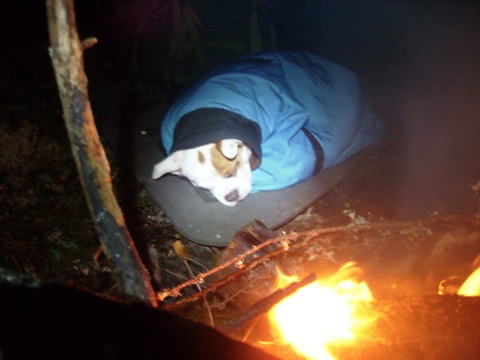
And of course, physical training. I think it is very important, whether you are spending time in the wilderness or not. It is also important to train correctly, and of course eat correctly at the right time. I am not interested in a beach body, never have been. I do not look like Arnold. Nor can I lift a truck, BUT I can carry a very heavy backpack, 50 kilos or more when I disappear into the wilderness for a month or more. I can go on for days and nights nonstop, no sleep. How do you get there? How do you train/work out? I will tell you another time. Now I have to sleep, also important.
Bye for now.
Stefan
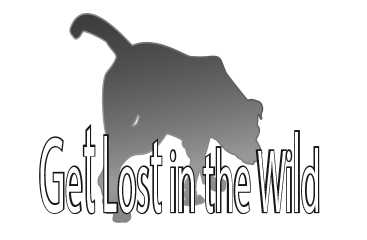
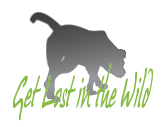
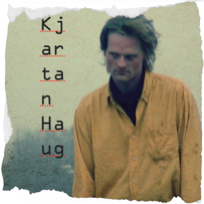
Stefan Forsman Wilderness Log